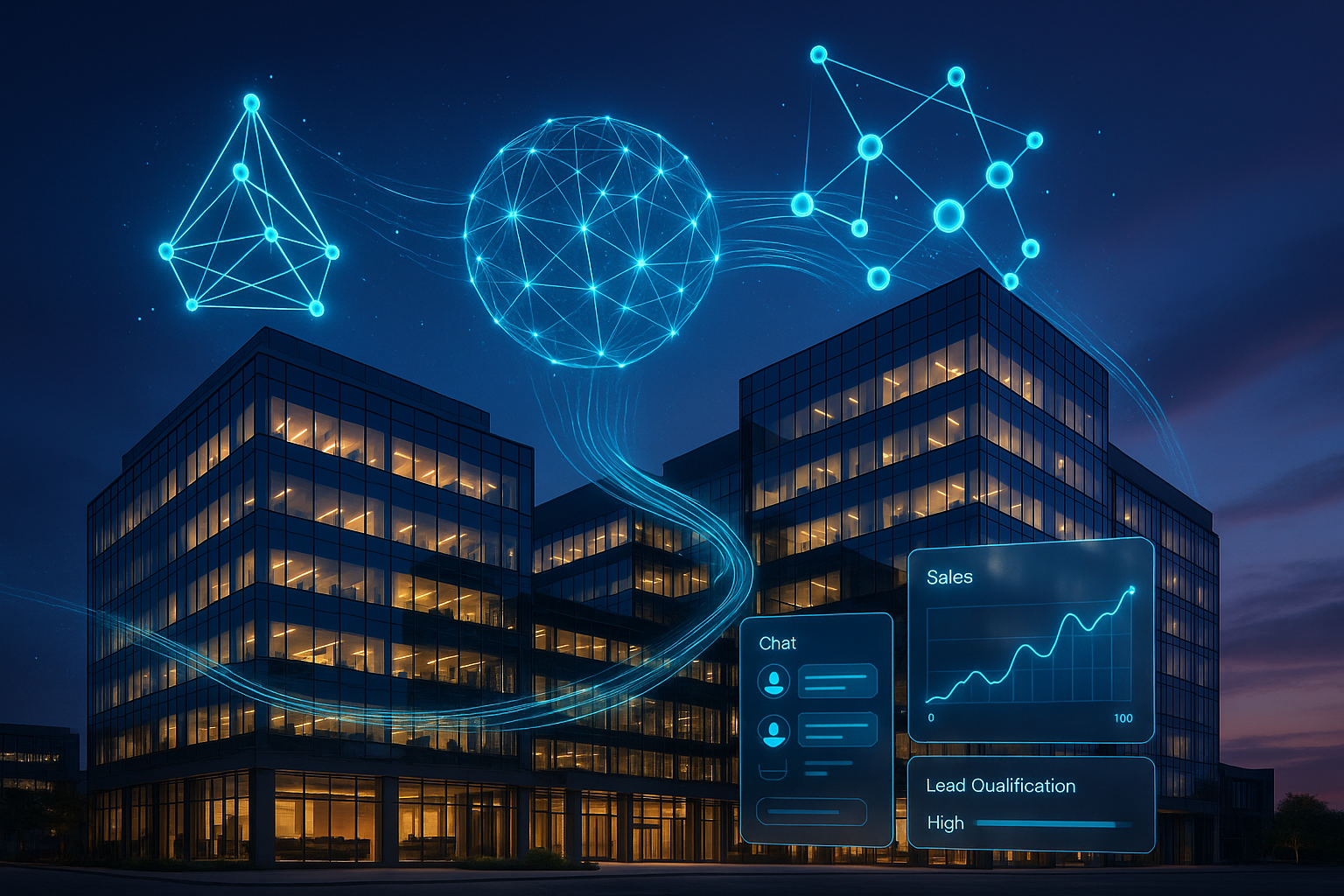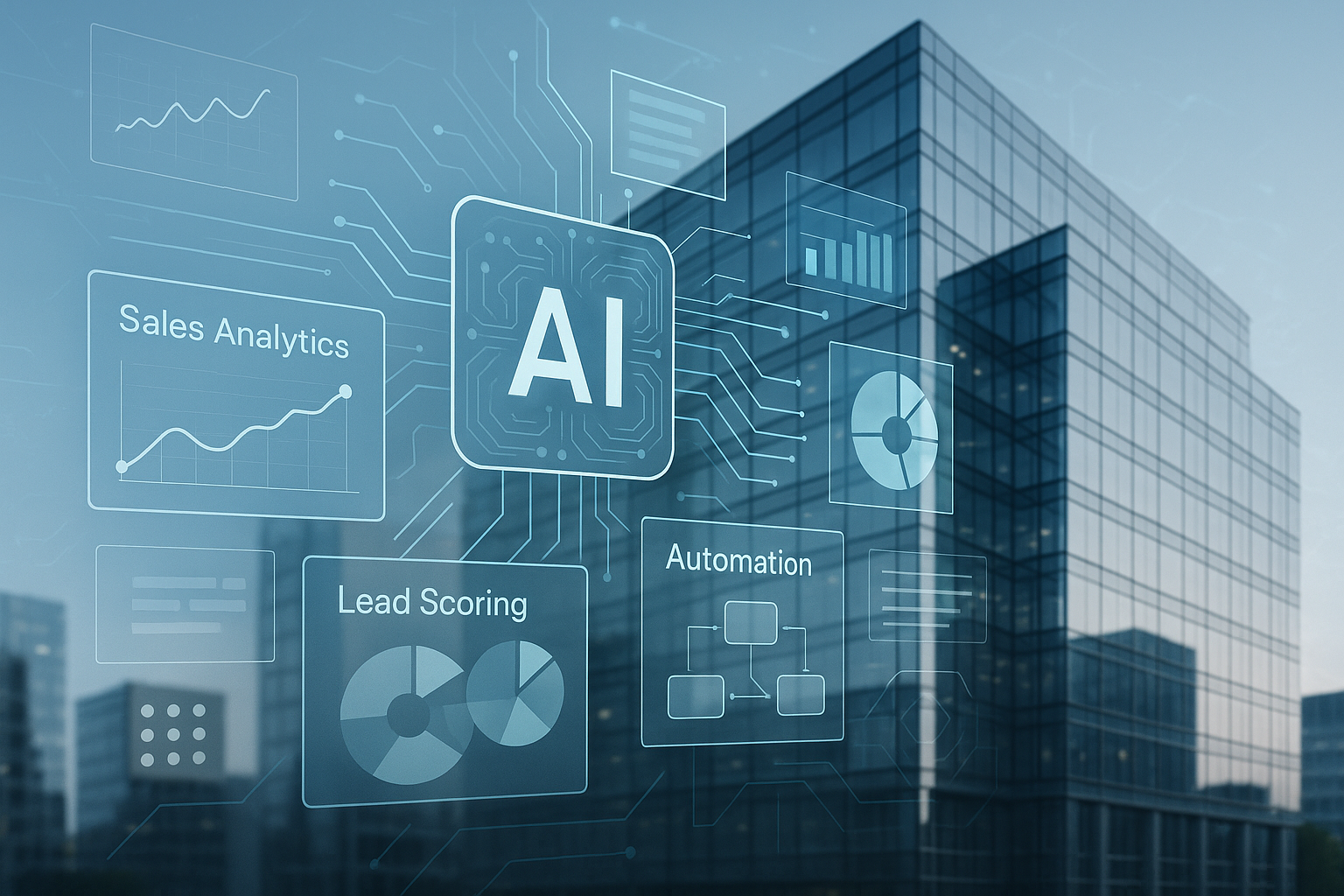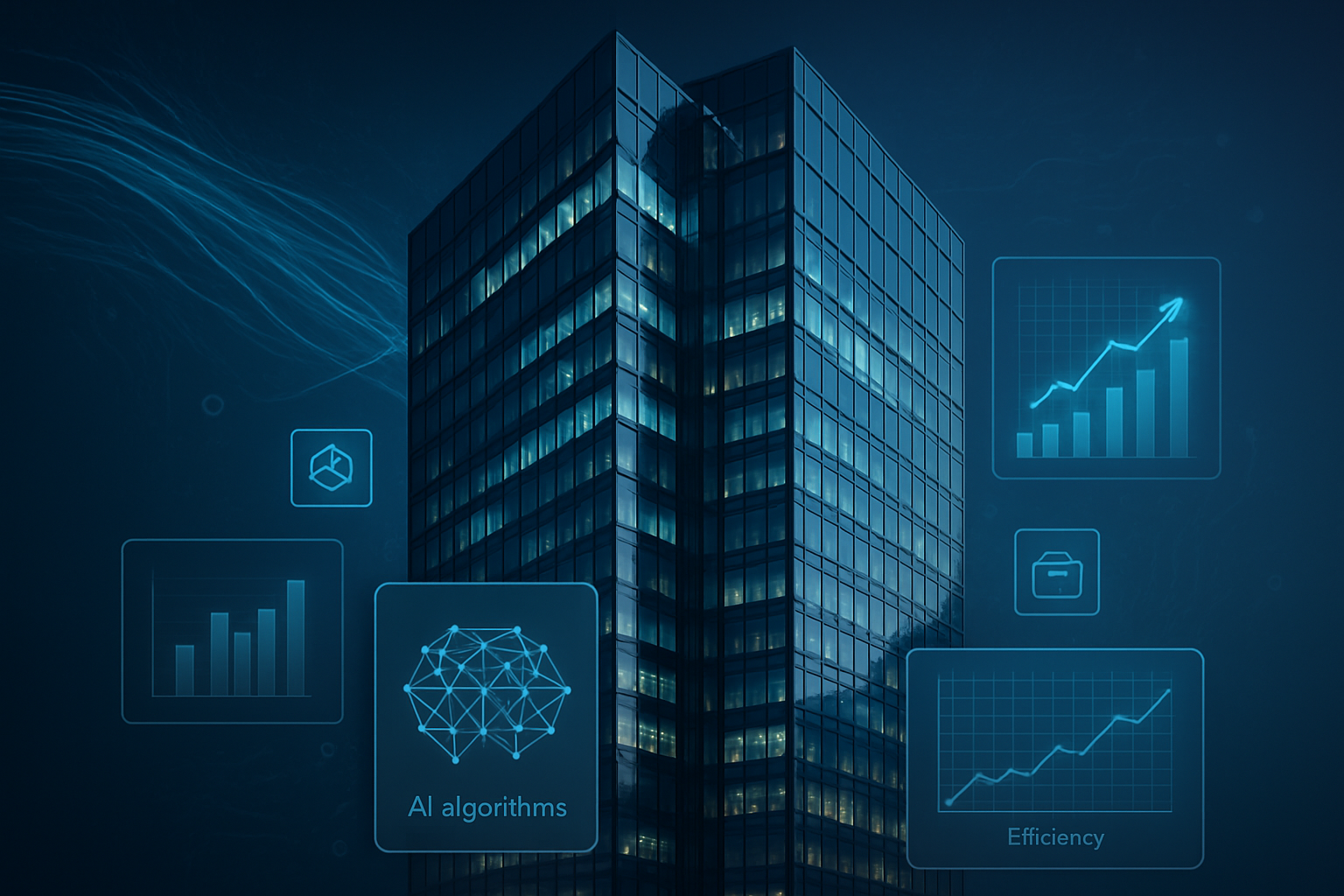
Multi-Agent AI Systems Transform CRE: From Due Diligence to Portfolio Management in 2025
Caiyman.ai Research Team
AI Solutions Architect
The commercial real estate industry stands at an inflection point. With the AI market in real estate exploding from $222.65 billion to $303.06 billion in 2025—representing a staggering 36.1% compound annual growth rate—institutional investors and property managers are discovering that individual AI tools are no longer sufficient. The future belongs to orchestrated multi-agent AI systems that can coordinate complex workflows, from automated due diligence to real-time portfolio optimization.
According to JLL's latest Global Future of Work survey, more than nine in ten C-suite leaders believe AI will fundamentally change workforce operations over the next five years, with a similar proportion planning to accelerate AI investments. This isn't just optimism—it's backed by concrete results. PropTech venture capital funding kicked off 2025 with $297 million invested across 27 companies, demonstrating unprecedented market momentum toward intelligent automation.
The transformation is already delivering extraordinary returns. Royal London Asset Management achieved a record-breaking 708% ROI and 59% energy savings by implementing JLL's AI-powered multi-agent systems. These aren't isolated successes—they represent the leading edge of a fundamental shift toward orchestrated intelligent workflows in commercial real estate.
Understanding Multi-Agent AI Systems in Commercial Real Estate Context
Multi-agent AI systems represent a quantum leap beyond traditional single-purpose AI tools. Rather than deploying isolated applications for specific tasks, these systems orchestrate collections of autonomous AI agents that collaborate to solve complex, distributed CRE challenges ranging from property acquisition analysis to ESG compliance reporting.
The key difference lies in orchestrated workflows with specialized agent roles. Where a traditional AI tool might analyze lease documents in isolation, a multi-agent system deploys a "Document Extraction Agent" that seamlessly hands off analyzed data to a "Risk Assessment Agent," which then collaborates with a "Compliance Agent" to ensure regulatory adherence—all coordinated by an orchestration layer that manages dependencies, handles exceptions, and maintains audit trails.
According to Deloitte's analysis of autonomous generative AI agents, true multiagent systems are being developed now, with enterprise pilots launched in late 2024. These systems significantly outperform single-model approaches by distributing tasks across specialized agents, especially in the complex environments that characterize institutional CRE operations.
Core Architecture Components
Effective multi-agent systems for CRE are built on five essential components: an agent layer with modular, LLM-based agents featuring access controls and task specialization; an orchestration engine that coordinates workflow sequences and manages agent handoffs; a data integration layer connecting to property management systems like Yardi, MRI, and ARGUS; a shared knowledge base using graph or vector databases for context-rich inter-agent communication; and robust APIs enabling seamless communication between agents, orchestration systems, and human operators.
The specialized agent roles eliminate the limitations of monolithic AI solutions. Rather than forcing a single AI system to handle everything from market analysis to legal compliance, multi-agent systems deploy expert agents optimized for specific functions—dramatically improving both accuracy and processing efficiency.
Framework Comparison for CRE Applications
Leading enterprise frameworks have emerged to support multi-agent deployment in commercial real estate. CrewAI excels at orchestrating teams of specialist agents for collaborative property due diligence and investment analysis. LangChain provides flexible, mature infrastructure for document processing, advisory chatbots, and multi-step RAG (Retrieval Augmented Generation) workflows. LlamaIndex specializes in knowledge-rich workflows, particularly valuable for complex ESG documentation and legal analysis. AutoGen and SuperAGI offer enterprise-ready platforms for workflow automation, compliance management, and comprehensive reporting.
The choice of framework depends on specific CRE use cases, existing technology infrastructure, and enterprise compliance requirements. Most institutional implementations benefit from hybrid approaches that leverage multiple frameworks for different workflow components.
Real-World Applications: Multi-Agent Systems in Action
The most compelling evidence for multi-agent AI comes from institutional implementations already delivering measurable results across the CRE value chain.
Due Diligence Transformation
Automated due diligence represents perhaps the most dramatic transformation in CRE workflows. Multi-agent systems are reducing traditionally weeks-long processes to mere days through sophisticated orchestration of specialized agents. A "Sourcing Agent" continuously analyzes market listings and off-market opportunities, feeding qualified prospects to a "Valuation Agent" that builds comprehensive financial models using integrated market and property data. Simultaneously, a "Document Review Agent" deploys natural language processing to extract critical clauses from leases, contracts, and legal documents, while a "Risk Assessment Agent" evaluates regulatory compliance and flags potential issues.
Leading investment banks and PropTech firms are already deploying these systems to minimize errors, scale portfolio review capacity, and dramatically accelerate acquisition timelines. Platforms like Dealpath and LeaseLens utilize AI-powered document review and extraction for faster underwriting and deal screening, demonstrating the practical viability of multi-agent approaches.
The capacity scaling benefits are particularly significant. Where traditional due diligence teams might handle dozens of potential acquisitions simultaneously, multi-agent systems enable analysis of hundreds or thousands of opportunities in parallel, fundamentally changing the scope and speed of institutional decision-making.
Property Management Innovation
Intelligent property management through multi-agent systems is revolutionizing operational efficiency and tenant satisfaction. "Predictive Maintenance Agents" analyze IoT sensor data, weather patterns, and historical maintenance records to schedule repairs before failures occur. "Tenant Communication Agents" provide 24/7 automated support and intelligent service request triage, ensuring urgent issues receive immediate attention while routine requests are efficiently routed to appropriate teams.
"Energy Optimization Agents" continuously regulate HVAC and lighting systems to minimize operational expenses while tracking carbon emissions for ESG reporting. These agents integrate with building management systems to optimize energy consumption in real-time, learning from usage patterns and external conditions to maximize efficiency.
ESG compliance agents represent a particularly valuable innovation, continuously monitoring utility, waste, and water data while automating reporting for GRESB, SFDR, and local regulatory mandates. The Royal London Asset Management case study with JLL's Hank AI platform exemplifies this potential, achieving 59% energy savings and reducing carbon emissions by 500 metric tons annually.
Major enterprise platforms including MRI Software and Yardi are embedding multi-agent concepts into their core offerings, validating the enterprise readiness of these approaches. ESG analytics vendors like Blooma.ai and Clarity AI employ agent-based architectures for large-portfolio reporting automation, demonstrating scalability across hundreds of institutional assets.
Strategic Implementation: From Pilot to Production
Successful multi-agent AI deployment requires a strategic, phased approach that balances ambitious transformation goals with practical implementation realities.
Technical Implementation Roadmap
Infrastructure assessment and API integration planning form the foundation of effective deployment. Organizations must evaluate existing CRE platforms, data quality, and integration requirements before designing agent specialization and workflow orchestration. The modular nature of multi-agent systems allows for incremental deployment, starting with high-value, low-risk use cases before expanding to more complex workflows.
Agent specialization should follow clear workflow design principles. Rather than attempting to automate entire processes immediately, successful implementations identify specific bottlenecks or high-volume tasks where agent automation can deliver immediate value. Testing environments and validation protocols ensure agent behavior meets enterprise standards before production deployment.
Data infrastructure requirements cannot be overstated. Multi-agent systems are only as effective as the CRE, market, and ESG data they access. Integration with existing platforms like Yardi, MRI, and ARGUS requires careful API planning and data governance protocols.
Organizational Readiness
Executive alignment and investment justification require clear ROI modeling and risk assessment. The Royal London case study provides a compelling template: 708% ROI with quantifiable energy savings and carbon reduction. However, each organization must develop business cases specific to their portfolio characteristics and operational priorities.
Staff training and capability development programs address the human side of transformation. As JLL research indicates, AI job postings have increased by over 250% since 2021, creating both opportunity and challenge for CRE organizations. Successful implementations invest heavily in developing AI literacy across teams while establishing clear protocols for human-agent collaboration.
Risk management and compliance integration ensure multi-agent systems meet regulatory requirements from day one. This includes robust intent logging, explainable decision paths, and audit trail capabilities essential for institutional compliance.
The Human-AI Collaboration Imperative
The evolution toward multi-agent AI systems represents a fundamental shift from automation to augmentation in CRE professional roles. Rather than replacing human expertise, these systems amplify human judgment and decision-making capabilities while handling routine data processing and analysis tasks.
Emerging hybrid roles demand both deep domain expertise and AI system fluency. CRE professionals increasingly need to manage and calibrate AI models, interpret complex outputs, and ensure ethical AI deployment. This requires new emphasis on strategic thinking, complex problem-solving, and continuous learning to work effectively with autonomous agents.
The 250% increase in AI talent demand highlighted in JLL research requires strategic workforce planning. Organizations must develop internal AI capabilities while establishing partnerships with technology providers for specialized implementation support.
Trust calibration and bias detection mechanisms become critical as agent systems gain autonomy in decision-making processes. Multi-agent systems must include robust mechanisms for detecting and correcting algorithmic bias, particularly in areas like tenant screening, property valuation, and investment analysis where bias could have significant legal and ethical implications.
Performance metrics must evolve to measure human-AI team effectiveness rather than individual contributions alone. This includes tracking how effectively human operators can supervise agent teams, identify exceptions requiring human intervention, and leverage agent insights for strategic decision-making.
ROI Evidence and Business Impact Metrics
The financial justification for multi-agent AI systems in CRE is increasingly compelling, with quantified results demonstrating transformational impact across key performance indicators.
The Royal London Asset Management case study represents a goldstandard example: 708% ROI achieved through JLL's Hank AI implementation, coupled with 59% energy savings and 500 metric tons of CO2 reduction annually. These results demonstrate how multi-agent systems deliver value across financial, operational, and ESG dimensions simultaneously.
Operational improvements show equally dramatic results. Growthpoint's implementation with MRI Software reduced downstream financial reporting time from three weeks to two hours—a 99% improvement that fundamentally changes operational capacity and responsiveness.
Portfolio performance metrics show multi-agent systems delivering 3.7% outperformance compared to traditional investment strategies in large residential REIT applications. This quantifiable alpha generation provides compelling justification for institutional adoption, particularly given the scale of institutional CRE portfolios.
Cost structure transformation extends beyond direct savings to capacity scaling benefits. Multi-agent systems enable organizations to handle exponentially larger deal volumes and portfolio complexity without proportional increases in staffing costs. This creates competitive advantages particularly valuable in market expansion and acquisition scenarios.
Risk reduction through improved compliance and audit trails offers additional value often difficult to quantify but critical for institutional operations. Automated compliance monitoring and continuous audit trail generation significantly reduce regulatory risks and operational oversight requirements.
The Future of Multi-Agent AI in Commercial Real Estate
Multi-agent AI systems represent far more than technological advancement—they constitute a fundamental evolution toward intelligent orchestration in commercial real estate operations. Early adopters are gaining significant competitive advantages in efficiency, decision-making speed, and analytical depth that will become increasingly difficult for competitors to match.
Integration capabilities with existing CRE platforms are making adoption more accessible than ever. Rather than requiring wholesale technology replacement, modern multi-agent frameworks integrate seamlessly with established platforms like Yardi, MRI, and ARGUS, reducing implementation barriers and accelerating ROI realization.
Human-AI collaboration models are emerging as the sustainable path forward, combining the analytical power and scalability of AI agents with human expertise in strategic thinking, relationship management, and complex problem-solving. This collaborative approach addresses workforce concerns while maximizing the value of both human and artificial intelligence.
The strategic implementation approach remains essential for maximizing ROI and minimizing risks. Organizations that develop comprehensive change management strategies, invest in workforce development, and maintain rigorous governance frameworks will capture the greatest value from multi-agent AI transformation.
As Deloitte predicts, 25% of companies using generative AI will launch agentic AI initiatives in 2025. In commercial real estate, early movers are positioning themselves to lead market transformation while late adopters risk fundamental competitive disadvantage.
Partner with Caiyman.ai for Your Multi-Agent AI Transformation
The transformation toward multi-agent AI systems in commercial real estate offers unprecedented opportunities for operational efficiency, competitive advantage, and financial performance. However, successful implementation requires deep expertise in both AI technologies and CRE operational realities.
Caiyman.ai specializes in strategic AI implementation for commercial real estate professionals, combining technical excellence with deep industry knowledge. Our expertise includes multi-agent system design, integration planning with existing CRE platforms, and comprehensive organizational change management tailored specifically for CRE workflows.
Whether you're exploring initial pilot projects or planning enterprise-wide transformation, our team provides the strategic guidance and technical expertise to maximize your multi-agent AI investment while minimizing implementation risks. Contact Caiyman.ai today to begin your journey toward AI-powered CRE excellence.
Share this article
Related Articles

LLM-Native AI Sales Agents Transform CRE: $4M Funding Signals Market Revolution in 2025
Uniti AI's $4M funding validates the transformative potential of LLM-native AI sales agents in commercial real estate, offering 24/7 engagement, 60-second response times, and revolutionary automation capabilities.

AI Sales Agents Transform CRE: $4M Uniti Funding Signals Industry Shift to Automation Revolution
Uniti AI's $4M seed funding marks a defining moment for commercial real estate as AI sales agents promise to automate 37% of CRE tasks and deliver $34 billion in efficiency gains by 2030.

AI Real Estate Revolution: How PropTech is Unlocking $34B in Efficiency Gains by 2030
Morgan Stanley projects AI will automate 37% of real estate tasks, generating $34 billion in efficiency gains by 2030. Discover how PropTech innovations are transforming commercial real estate operations and what it means for industry leaders.